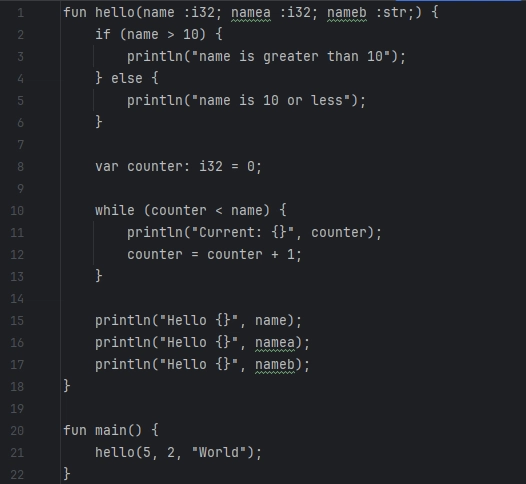Logging in Spring Boot: A Comprehensive Guide to Centralized Logging( Using Docker )- PART 2
Introduction Logging is an essential part of any application. It helps developers debug, monitor, and analyze application behavior. In this blog, we'll explore logging in Spring Boot, covering configuration, best practices, and centralized logging using the ELK stack. 1. Understanding Logging in Spring Boot Spring Boot uses SLF4J as a facade for different logging frameworks like Logback (default), Log4j2, and Java Util Logging (JUL). Logging Levels TRACE – Most detailed information, for troubleshooting. DEBUG – Detailed information useful for debugging. INFO – General application information. WARN – Indication of potential issues. ERROR – Serious errors requiring immediate attention. 2. Folder Structure for a Spring Boot Logging Project Here is the recommended folder structure: springboot-logging/ │── src/ │ ├── main/ │ │ ├── java/com/example/logging/ │ │ │ ├── controller/ │ │ │ │ ├── LoggingController.java │ │ │ ├── service/ │ │ │ │ ├── LoggingService.java │ │ │ ├── LoggingApplication.java │ │ ├── resources/ │ │ │ ├── application.properties │ │ │ ├── logback.xml │── logs/ (Generated log files) │── docker-compose.yml (For ELK Stack) │── pom.xml (For Maven Dependencies) │── README.md 3. Configuring Logging in Spring Boot Using application.properties or application.yml # application.properties logging.level.root=INFO logging.level.org.springframework=DEBUG logging.file.name=logs/app.log logging.file.path=logs # application.yml logging: level: root: INFO org.springframework: DEBUG file: name: logs/app.log Using logback.xml for Custom Configuration %d{yyyy-MM-dd HH:mm:ss} %-5level %logger{36} - %msg%n 4. Implementing Logging in a Spring Boot Application Injecting Logger in a Spring Boot Service import org.slf4j.Logger; import org.slf4j.LoggerFactory; import org.springframework.stereotype.Service; @Service public class LoggingService { private static final Logger logger = LoggerFactory.getLogger(LoggingService.class); public void process() { logger.info("Processing request..."); try { // Simulated processing } catch (Exception e) { logger.error("Exception occurred: ", e); } } } Logging in a Controller import org.slf4j.Logger; import org.slf4j.LoggerFactory; import org.springframework.web.bind.annotation.GetMapping; import org.springframework.web.bind.annotation.RequestMapping; import org.springframework.web.bind.annotation.RestController; @RestController @RequestMapping("/api") public class LoggingController { private static final Logger logger = LoggerFactory.getLogger(LoggingController.class); @GetMapping("/log") public String logExample() { logger.info("INFO: API hit at /log"); logger.warn("WARN: Example warning"); logger.error("ERROR: Example error"); return "Check the logs for details."; } } 5. Centralized Logging with ELK Stack Why Centralized Logging? Aggregate logs from multiple services. Real-time monitoring. Improved debugging and analysis. Setting Up ELK Stack with Docker Create a docker-compose.yml file: version: '3' services: elasticsearch: image: docker.elastic.co/elasticsearch/elasticsearch:8.0.0 container_name: elasticsearch environment: - discovery.type=single-node ports: - "9200:9200" networks: - elk logstash: image: docker.elastic.co/logstash/logstash:8.0.0 container_name: logstash volumes: - ./logstash.conf:/usr/share/logstash/pipeline/logstash.conf ports: - "5000:5000" depends_on: - elasticsearch networks: - elk kibana: image: docker.elastic.co/kibana/kibana:8.0.0 container_name: kibana ports: - "5601:5601" depends_on: - elasticsearch networks: - elk networks: elk: driver: bridge Logstash Configuration (logstash.conf) input { tcp { port => 5000 codec => json } } output { elasticsearch { hosts => ["http://elasticsearch:9200"] } } Sending Logs to Logstash from Spring Boot Modify logback.xml: logstash:5000 Viewing Logs in Kibana Start the ELK stack: docker-compose up -d Open Kibana at http://localhost:5601 Create an index pattern to visualize logs. 6. Best Practices for Logging Use Structured Logging (JSON format) for better parsing. Avoid Logging Sensitive Information (e.g., passwords, tokens). Use MDC (Mapped Diagnostic Context) for tracking requests across services. Example: JSON Logging 7. Conclusion Logging is crucial for debugging and monitoring ap

Introduction
Logging is an essential part of any application. It helps developers debug, monitor, and analyze application behavior. In this blog, we'll explore logging in Spring Boot, covering configuration, best practices, and centralized logging using the ELK stack.
1. Understanding Logging in Spring Boot
Spring Boot uses SLF4J as a facade for different logging frameworks like Logback (default), Log4j2, and Java Util Logging (JUL).
Logging Levels
- TRACE – Most detailed information, for troubleshooting.
- DEBUG – Detailed information useful for debugging.
- INFO – General application information.
- WARN – Indication of potential issues.
- ERROR – Serious errors requiring immediate attention.
2. Folder Structure for a Spring Boot Logging Project
Here is the recommended folder structure:
springboot-logging/
│── src/
│ ├── main/
│ │ ├── java/com/example/logging/
│ │ │ ├── controller/
│ │ │ │ ├── LoggingController.java
│ │ │ ├── service/
│ │ │ │ ├── LoggingService.java
│ │ │ ├── LoggingApplication.java
│ │ ├── resources/
│ │ │ ├── application.properties
│ │ │ ├── logback.xml
│── logs/ (Generated log files)
│── docker-compose.yml (For ELK Stack)
│── pom.xml (For Maven Dependencies)
│── README.md
3. Configuring Logging in Spring Boot
Using application.properties or application.yml
# application.properties
logging.level.root=INFO
logging.level.org.springframework=DEBUG
logging.file.name=logs/app.log
logging.file.path=logs
# application.yml
logging:
level:
root: INFO
org.springframework: DEBUG
file:
name: logs/app.log
Using logback.xml for Custom Configuration
name="Console" class="ch.qos.logback.core.ConsoleAppender">
level="INFO">
ref="Console"/>
4. Implementing Logging in a Spring Boot Application
Injecting Logger in a Spring Boot Service
import org.slf4j.Logger;
import org.slf4j.LoggerFactory;
import org.springframework.stereotype.Service;
@Service
public class LoggingService {
private static final Logger logger = LoggerFactory.getLogger(LoggingService.class);
public void process() {
logger.info("Processing request...");
try {
// Simulated processing
} catch (Exception e) {
logger.error("Exception occurred: ", e);
}
}
}
Logging in a Controller
import org.slf4j.Logger;
import org.slf4j.LoggerFactory;
import org.springframework.web.bind.annotation.GetMapping;
import org.springframework.web.bind.annotation.RequestMapping;
import org.springframework.web.bind.annotation.RestController;
@RestController
@RequestMapping("/api")
public class LoggingController {
private static final Logger logger = LoggerFactory.getLogger(LoggingController.class);
@GetMapping("/log")
public String logExample() {
logger.info("INFO: API hit at /log");
logger.warn("WARN: Example warning");
logger.error("ERROR: Example error");
return "Check the logs for details.";
}
}
5. Centralized Logging with ELK Stack
Why Centralized Logging?
- Aggregate logs from multiple services.
- Real-time monitoring.
- Improved debugging and analysis.
Setting Up ELK Stack with Docker
Create a docker-compose.yml file:
version: '3'
services:
elasticsearch:
image: docker.elastic.co/elasticsearch/elasticsearch:8.0.0
container_name: elasticsearch
environment:
- discovery.type=single-node
ports:
- "9200:9200"
networks:
- elk
logstash:
image: docker.elastic.co/logstash/logstash:8.0.0
container_name: logstash
volumes:
- ./logstash.conf:/usr/share/logstash/pipeline/logstash.conf
ports:
- "5000:5000"
depends_on:
- elasticsearch
networks:
- elk
kibana:
image: docker.elastic.co/kibana/kibana:8.0.0
container_name: kibana
ports:
- "5601:5601"
depends_on:
- elasticsearch
networks:
- elk
networks:
elk:
driver: bridge
Logstash Configuration (logstash.conf)
input {
tcp {
port => 5000
codec => json
}
}
output {
elasticsearch {
hosts => ["http://elasticsearch:9200"]
}
}
Sending Logs to Logstash from Spring Boot
Modify logback.xml:
name="LOGSTASH" class="net.logstash.logback.appender.LogstashTcpSocketAppender">
class="net.logstash.logback.encoder.LogstashEncoder"/>
level="INFO">
ref="LOGSTASH"/>
Viewing Logs in Kibana
- Start the ELK stack:
docker-compose up -d - Open Kibana at
http://localhost:5601 - Create an index pattern to visualize logs.
6. Best Practices for Logging
- Use Structured Logging (JSON format) for better parsing.
- Avoid Logging Sensitive Information (e.g., passwords, tokens).
- Use MDC (Mapped Diagnostic Context) for tracking requests across services.
Example: JSON Logging
class="net.logstash.logback.encoder.LogstashEncoder"/>
7. Conclusion
Logging is crucial for debugging and monitoring applications. Using Spring Boot’s built-in support with centralized logging tools like ELK enhances visibility and troubleshooting.
Would you like a GitHub repository with a working example?










































































































































































![[The AI Show Episode 142]: ChatGPT’s New Image Generator, Studio Ghibli Craze and Backlash, Gemini 2.5, OpenAI Academy, 4o Updates, Vibe Marketing & xAI Acquires X](https://www.marketingaiinstitute.com/hubfs/ep%20142%20cover.png)



























































































































![[DEALS] The Premium Learn to Code Certification Bundle (97% off) & Other Deals Up To 98% Off – Offers End Soon!](https://www.javacodegeeks.com/wp-content/uploads/2012/12/jcg-logo.jpg)


![From drop-out to software architect with Jason Lengstorf [Podcast #167]](https://cdn.hashnode.com/res/hashnode/image/upload/v1743796461357/f3d19cd7-e6f5-4d7c-8bfc-eb974bc8da68.png?#)






































































































.png?#)





.jpg?#)































_Christophe_Coat_Alamy.jpg?#)
 (1).webp?#)





































































































![Rapidus in Talks With Apple as It Accelerates Toward 2nm Chip Production [Report]](https://www.iclarified.com/images/news/96937/96937/96937-640.jpg)








































































































































